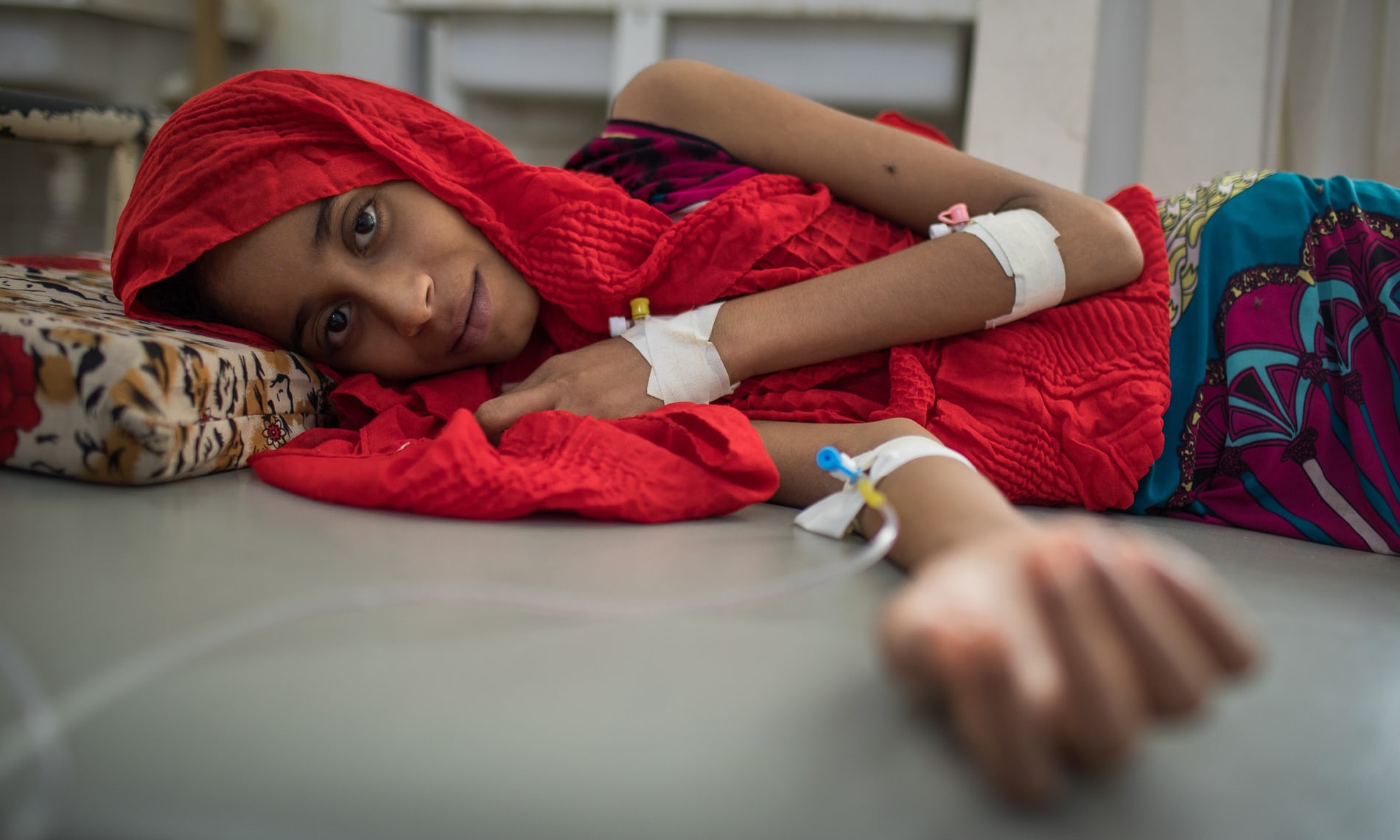Blame the Saudis for Yemen’s Cholera Outbreak – they are Targeting the People
YemenExtra
By;Jonathan Kennedy,
The cholera crisis in Yemen is due largely to the Saudi-led coalition’s strategy of deliberately attacking civilians and infrastructure.
Over the past months, Yemen has been ravaged by a cholera outbreak that the UN has branded the worst in the world. About 7,000 new cases are reported daily .
The epidemic is one aspect of a broader humanitarian emergency in Yemen. Two-thirds of the population – 18.8 million people – require some form of emergency aid. Food production has collapsed and 4.5 million children and pregnant and lactating women are acutely malnourished. Only 45% of health facilities are functioning, and 14.8 million people lack access to basic healthcare. About the same number require assistance to access safe drinking water and sanitation.
Cholera, a bacterial infection, is spread by water containing contaminated faeces. It can be easily prevented and easily treated. Cholera first spread from the Ganges delta in 1817, and the resulting pandemics killed tens of millions of people across the world over the 150 years. Modern improvements in water and sanitation infrastructure, and better access to medicines and healthcare, have brought a marked fall in the number of cases. Today, outbreaks occur chiefly in areas where water, sanitation and health systems are inadequate, or where they have been destroyed by natural or manmade disasters.
Since March 2015, Saudi Arabia has led a coalition of Sunni Arab states that has attempted to restore the government using airstrikes, an air and naval blockade, and ground troops. The US and UK provide the coalition with logistical support and military equipment. The Saudis have accused Iran of assisting the Houthis, but there is limited evidence for this claim and it is denied by the Houthis and Iran.
At least 10,000 people have been killed and 40,000 injured in the conflict. Both sides stand accused of disregarding the wellbeing of civilians and breaching international law. The rebels have indiscriminately fired artillery into residential areas in government-controlled areas and Saudi Arabia. But as the Saudi-led coalition commands far greater resources, it has been able to cause destruction of a totally different magnitude.
The Saudi air force has carried out indiscriminate attacks that have caused the majority of civilian deaths and injuries during the conflict. Airstrikes have targeted civilian infrastructure, including hospitals, farms, schools, water infrastructure, markets and the main port of Hodeida. They complement a Saudi-led naval and air blockade of rebel-controlled areas that has caused shortages of many essential items, including food, fuel and medical supplies.
It was not until four weeks after the start of the outbreak that the first plane carrying medical aid was allowed to land in Sana’a. The government no longer pays public employees working in rebel-controlled areas. About 30,000 health workers have not received a salary for almost a year. Sanitation workers and water engineers in Sana’a have been on strike for months, leaving uncollected rubbish on the streets and municipal drains clogged.
These numbers indicate that the outbreak is not simply an inevitable consequence of war. It is rather a direct outcome of the Saudi-led coalition’s strategy of targeting civilians and infrastructure in Houthis-controlled areas. Criticism of the US and UK governments’ support for the Saudi-led intervention, this has not led to a policy change.

